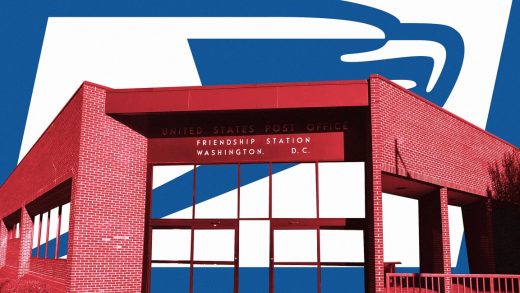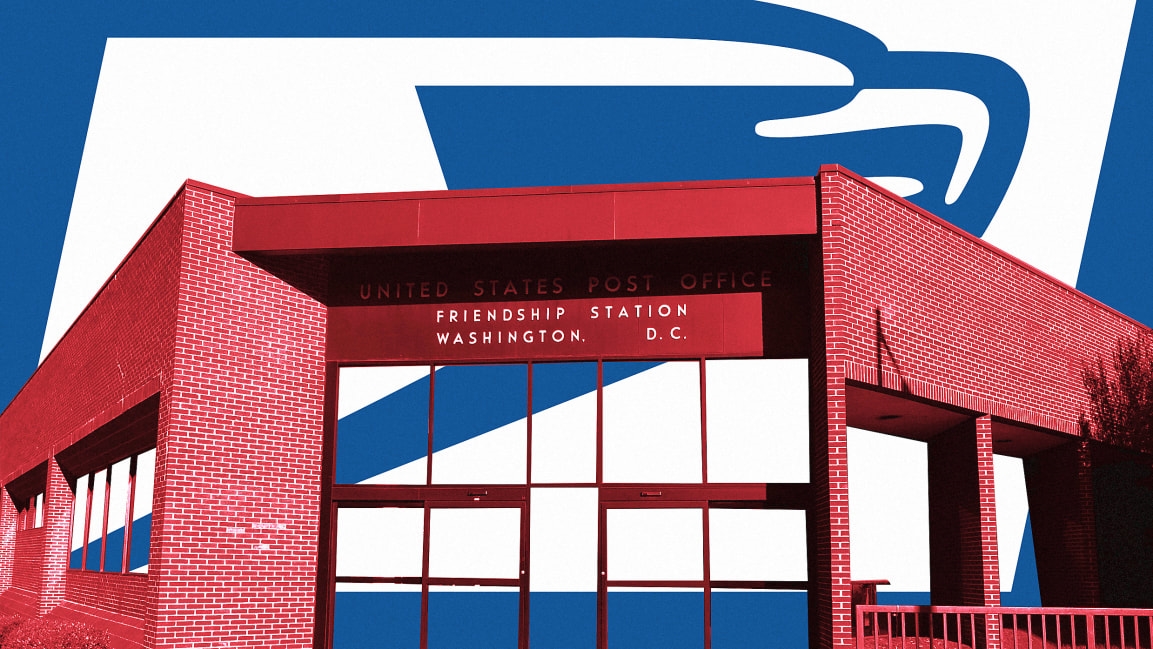The post office is finally going to try out being a bank
According to a 2019 report by the Federal Reserve, 22% of American adults, or 63 million, are either “unbanked” or “underbanked,” meaning they don’t have easy access to a financial institution to do things like cash checks or save money. Separately, a 2020 report by the U.S. Government Accountability Office found that the U.S. Postal Service had lost $69 billion over 11 years, declaring that its “mission and financial solvency are increasingly in peril.”
A new initiative from the USPS begins to address the confluence of those two issues. The agency confirmed that it has been offering limited financial services since September 13 in four U.S. locations: The Bronx, New York; Baltimore; Washington, D.C.; and Falls Church, Virginia. Customers at post offices in those areas are able to use payroll and business checks to purchase gift cards “to provide customers an alternative to traditional check cashing.”
In what it’s calling a “test pilot,” the USPS confirmed via an emailed statement that customers will be able to buy these single-use gift cards of up to $500 in value, using checks as payment, for a fee of $5.95, regardless of the size of the check. The initiative was set up in conjunction with the American Postal Workers Union (APWU), and, though it’s a very modest push toward postal banking services, this is its biggest since 1966.
The test pilot will allow the agency to raise some much-needed revenue. Its precarious financial situation began in 2006, when Congress passed an unprecedented bill mandating the post office create its own $72 billion fund to finance its employees’ pensions—75 years into the future—for which it had to secure a loan from the Treasury. In the email statement, USPS spokesperson Tatiana Roy said the offering aligns with Delivering for America, the agency’s 10-year plan “to achieve financial sustainability and service excellence.” That plan, released publicly in March, aims to attain positive net profit in three years, and “reverse a projected $160 billion in losses” in ten, through a mix of capital investments, postal rate changes, and restructuring mail processing equipment and operations.
At the same time, millions of people who live in “bank deserts” are in need of banking access. Post offices seem like an apt solution: 59% of them are in zip codes that have no banks at all. Starting these pilots now also appears to be a response to these social pressures, says Mehrsa Baradaran, a law professor at the University of California, and a longtime proponent of postal banking, which she wrote about in her 2015 book, How the Other Half Banks. She says early postal banking, first established in 1910, was set up to adapt to social needs of the time. Then dubbed “the poor man’s bank,” the post office was used by rural farmers and immigrants, and mail banking by troops in both world wars; as with today’s pilot program, deposits were also capped at $500, she adds. But these services were discontinued in 1966.
The idea has regained popularity in recent years. A 2014 report from the postal service’s inspector general endorsed the idea, and progressive Democrats, such as Senators Bernie Sanders and Kirsten Gillibrand have championed the concept, most notably in Gillibrand’s Postal Banking Act of 2018. This spring, along with Rep. Alexandria Ocasio-Cortez, they called for funding for the pilot programs to be included in next year’s Appropriations Bill. Gillibrand reportedly praised the program as a “great first step,” adding in a statement: “While the products it will offer are not as expansive as those contained in my legislation, a pilot program will demonstrate the value to these communities.”
Critics have long expressed fear of public competition with private banks, and they say banking for the underserved should be left to community banks, also known as Minority Depository Institutions. In fact, the the post office doesn’t use the word “banking” when discussing these pilots, rather “financial services.” This is not “full-scale postal banking,” Baradaran agrees, rather services consistent with what the post office already offers, like money orders. “No one, including me, has ever proposed that the post office become a bank or compete with banks,” she says.
Baradaran agrees it’s “absolutely” a sign of progress, adding that the next helpful step would be to add a digital app component for easier access. And, since 90% of the zip codes without banks or credit unions are rural, she says the agency should establish rural pilots, too (which would also require, she notes, better rural broadband).
(26)



